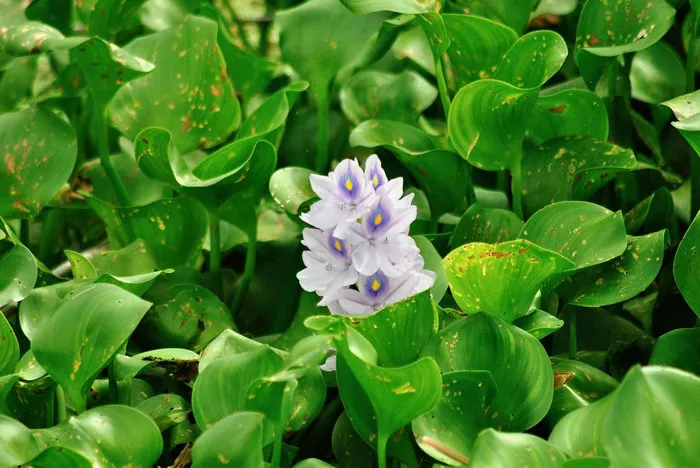Every November, Nigeria’s waterways undergo a remarkable transformation. As the rains subside, a stunning spectacle unfolds: water hyacinths, with their glossy leaves and enchanting lavender flowers, begin to blanket the rivers, lakes, and lagoons.
Achenyo Idachaba-Obaro, who relocated to Nigeria in 2009, describes the scene as “verdant and green,” yet she warns against the plant’s deceptive allure. “It’s very beautiful to look at—so verdant and green,” says Achenyo. “You look at the plant and think it could be ornamental, but it isn’t—it’s a weed.”
Originating from the Amazon basin, water hyacinths (Eichhornia crassipes) have spread worldwide, blamed partly on their introduction during the 1884 Cotton States Exposition in New Orleans. Despite their aesthetic appeal, these invasive plants wreak havoc wherever they settle, disrupting transport, diminishing water quality, and threatening native aquatic life.
According to Julie Coetzee, a botanist at Rhodes University, efforts to control water hyacinths have proven challenging due to their rapid reproduction. “It’s the world’s worst floating invasive plant because of its reproductive ability,” Coetzee explains.
Various methods have been attempted to manage the infestation, from manual removal to herbicide application. However, these efforts have largely failed in Nigeria, where over a million hectares of waterways across 20 states are affected, impacting millions of livelihoods.
In response, social entrepreneurs like Idachaba-Obaro are exploring innovative solutions. Her firm, MitiMeth, converts harvested water hyacinths into useful products, offering a sustainable approach to combat the menace.
Water hyacinths possess unique traits that contribute to their success as invaders. They reproduce rapidly in warm, dry conditions, doubling in biomass every seven to 14 days. Furthermore, each flower can produce thousands of seeds, which remain viable for up to 25 years.
In Nigeria’s Lagos state, where waterways are vital for transportation, the annual infestation of water hyacinths during the dry season disrupts daily life. Last November, the Ikorodu ferry terminal was closed for over two months due to impassable waters.
Beyond the inconvenience to humans, water hyacinths pose threats to aquatic ecosystems. They block sunlight, inhibiting photosynthesis and depleting oxygen levels, ultimately suffocating fish and other aquatic organisms.
Recent research has also revealed their role in harboring disease-carrying mosquitoes. In a study conducted with researchers from Leiden University, it was found that the Culex pipiens mosquito, a carrier of diseases such as West Nile and Usutu viruses, preferentially lays eggs in water hyacinths.
Additionally, the decomposition of water hyacinths generates methane, a potent greenhouse gas, exacerbating environmental concerns.
Despite their captivating appearance, water hyacinths represent a significant challenge for Nigeria and other affected regions. Innovative approaches, such as those pursued by Idachaba-Obaro and MitiMeth, offer hope for mitigating the impact of these beautiful yet destructive pests.


